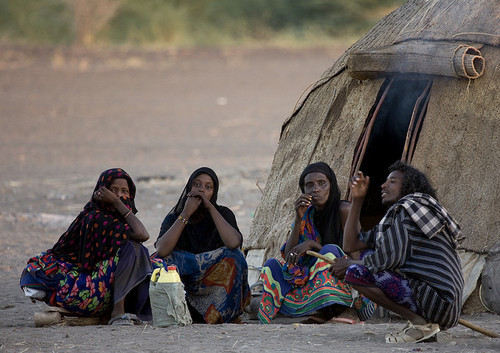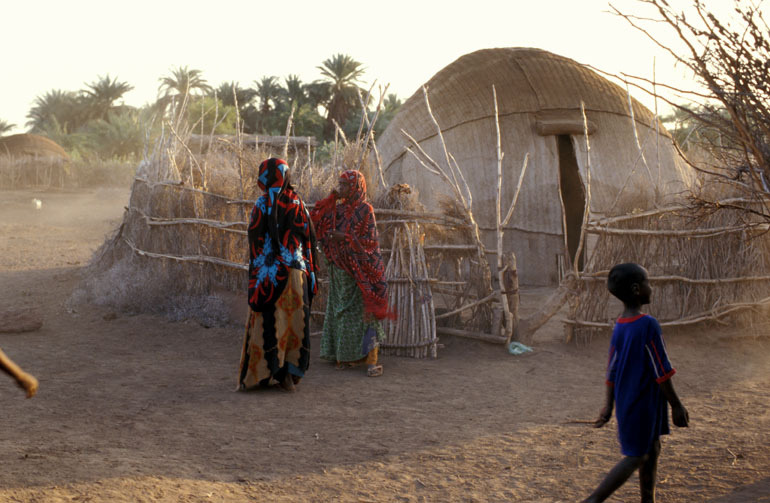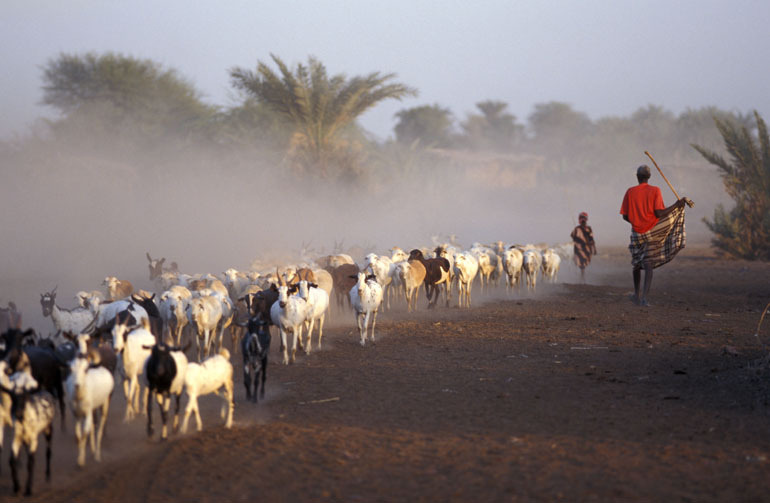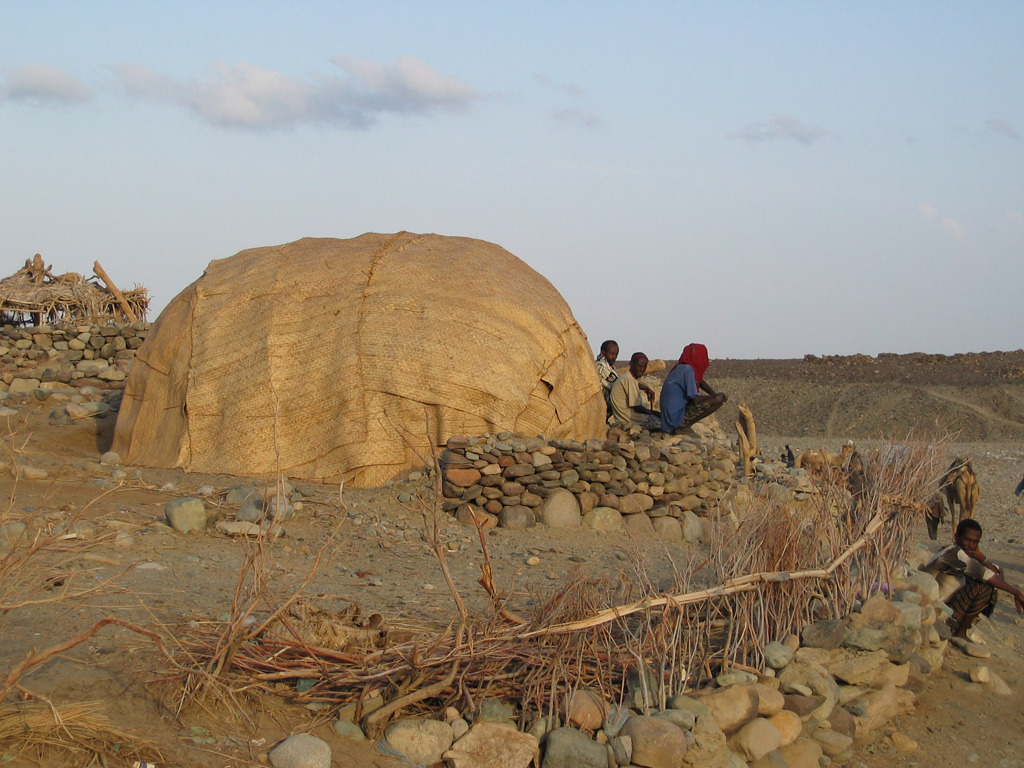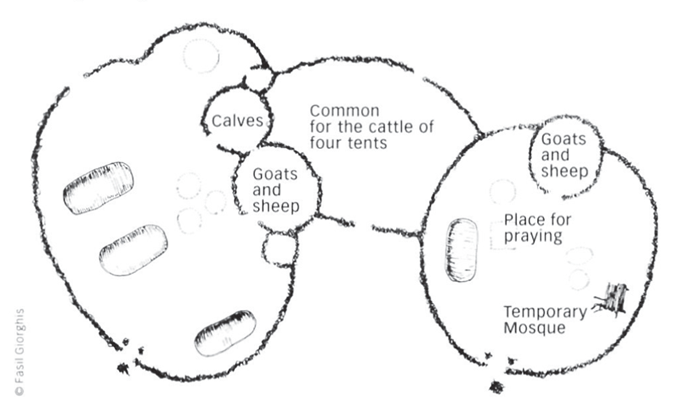V 21 |
Afar tent |
type |
|
place |
|
population |
The warlike Afar clans have nothing to fear, living as they do in one of the most inhospitable places on Earth. During the nine month long dry season in the Danakil desert it is scorching hot, often reaching 50 degrees Celsius. This nomadic pastoralist people breed goats, sheep and cattle and also keep camels, horses and donkeys. They wander from place to place all year round in search of water and fresh grazing lands, carrying their hut like tents with them.
The women receive a tent and its furniture as their dowries. Perhaps for this reason it is their task, as well as looking after the children and animals, to strike camp and put up the tents.
The camps are typically composed of 2-6 tents arranged in a circle, although there can be up to 12 of them. These are then surrounded by a fence made of thorny bushes and stones. In the centre of the camp a pen is built of the same materials for the smaller animals.
The tents themselves are 1.6-2.2 metres tall with an area of 6-15 m². Their small (80×35 cm) entrances are oriented to face the rising sun. Just inside the door is a fireplace and further inside there is a roughly 2×2 metre wide bed which is used as a sofa during the day. The frame of the tent is made of several branches placed lengthways and 30-50 bent cross branches, covered with a woven fabric. They build huts which are very similar structures for their guests, but covered in bark and plants. In contrast to the mobile tents these huts are temporary buildings and are not taken with them when they set off for a new camp.
